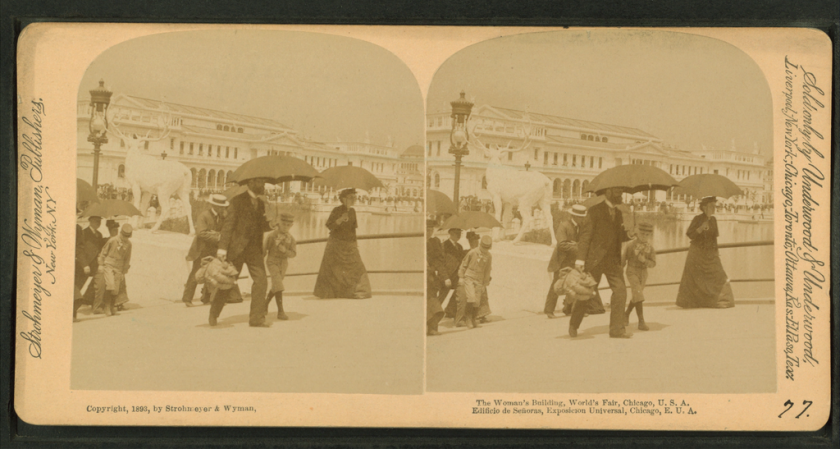
Sue Searing, GSLIS affiliated faculty member and LIS librarian, recently published an article in American Libraries about the library of works by women created for the 1893 World’s Columbian Exposition held in Chicago. The collection of over 8,000 volumes was housed in the Women’s Building and included books written by women from 24 countries.
 Searing’s article includes a discussion of the new release Right
Here I See My Own Books: The Woman’s Building Library at the World’s Columbian
Exposition (University of Massachusetts Press, 2012) by Sarah Wadsworth and
Wayne Wiegand.
Searing’s article includes a discussion of the new release Right
Here I See My Own Books: The Woman’s Building Library at the World’s Columbian
Exposition (University of Massachusetts Press, 2012) by Sarah Wadsworth and
Wayne Wiegand.
Wiegand will visit GSLIS on April 24 for a special presentation of the GSLIS History Salon where he will meet with GSLIS faculty, staff, and students.
The library filled a large and beautifully furnished room on the second story of the temporary structure. Wadsworth, a scholar of 19th-century literature, and Wiegand, a library historian, recount the energetic planning and diligent work that went into gathering, cataloging, and exhibiting the impressive collection. It’s a surprisingly gripping tale of power struggles, budget crises, and last-minute machinations that will feel familiar to any reader who’s strived to meet impossible goals with inadequate resources.
Never before had a library been assembled for the express purpose of showcasing women’s literary achievements. Committees of clubwomen in nearly every state of the Union identified female authors, living and deceased, and shipped copies of their works to Chicago. Many foreign women contributed books as well. The resulting collection topped 8,000 volumes and represented 24 nations. Women librarians, handpicked by Melvil Dewey, were hired to catalog the books and interact with the public. Debates ensued over the classification system: Politics dictated a geographical shelf arrangement, but a card catalog provided access by author and subject.
The Woman’s Building and its library stood as shining examples of what women could accomplish. A few prominent women played outsized roles, including Bertha Palmer, wealthy wife of a leading Chicago businessman and chair of the fair’s Board of Lady Managers; interior designer Candace Wheeler; and librarian Edith Clarke. Hundreds of other women, at the national and state levels, formed networks and marshaled resources in an era before women gained the vote and most of the rights we enjoy today.